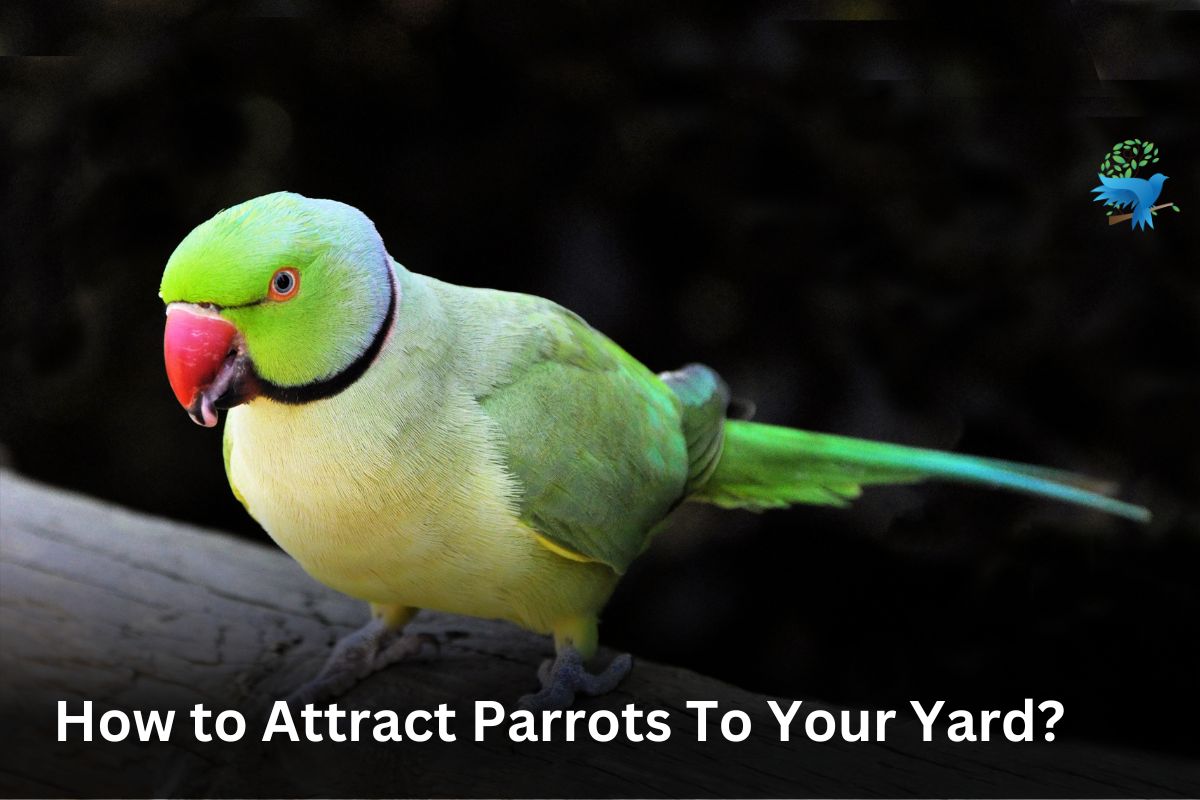How to Attract Parrots To Your Yard?

Whether you’re a bird watcher you will just love the charm of parrots. Do you want to bring the beauty of wild parrots to your yard?
These colorful and intelligent birds can bring beauty to your yard and landscape. By creating a welcoming environment for the parrots, you can attract these fascinating creatures and provide them with a safe space to feed, nest, and thrive.
Parrots are intelligent birds with their vibrant colors and the ability to mimic human speech. Drawing more species of parrots to visit your yard adds color and a beautiful environment. But how can we make our yards more appealing to these beautiful birds?
How to Attract Parrots?
- Provide the Food Parrots Love
- Build a Birdbath
- Create A Suitable Habitat for Parrots
- Plant Trees in Your Yard Tropical and deciduous plants
- Provide a nesting environment
- Make Your Yard Predators
Physical Characteristics and Size of Parrots
Parrots are known for their vibrant plumage and strong beaks. Parrots are of various sizes; from tiny budgies that measure around 7 inches long, to larger ones like Amazon Parrot and African Grey’s stretching up to 13 inches and much larger macaws that grow up to 38–40 inches.
Where Do Parrots Live? Their Natural Habitat
Most parrots are native to tropical and subtropical regions such as Australia, Africa, South Asia and South America. They thrive in environments rich in vegetation such as rainforests, woodlands, and jungle-like areas.
What Do Parrots Eat? Diet Preferences
Parrots and omnivorous birds meaning they eat fruits, plants, and insects. The diet varies from seeds, nectar, and pollen up to fruits. Seeds and nuts are their favorite food.
Set up a feeding station or bird feeders filled with seeds or fruits like almonds, peanuts, or fresh fruits.
However, care must be taken while feeding, as some foods can be harmful to parrots.
Additionally, consider planting tropical plants, which provide both food sources and nesting sites for the Parrots.
Read More: Do Cardinals Eat Blueberries?
Mating, Nesting, Eggs & Hatchlings Of Parrots
Interestingly enough, parrot couples stick together year-round. They usually seek out tree cavities or cliff sides as potential nesting sites, making use of the protection they offer.
The female lays around two to eight white eggs. Both parents would take turns incubating. It takes almost 20 to 30 days of incubation before the egg hatches.
While newborns emerge featherless with closed eyes at birth. At three weeks old, chicks begin to grow their adult feathers. Depending on the species, it can take more than one year for them to reach full maturity.
What Are Predators of Parrots?
Parrot predators include hawks, eagles, and owls from above while snakes, cats, and monkeys pose a threat from below.
How To Attract Parrots? 6 Proven Ways
Provide the Food Parrots Love
Introducing a variety of food through different types of bird feeders, it encourages these birds to visit your yard instantly. Set up a feeding station with seeds, nuts, and fruits that are appealing to parrots’ taste buds.
Build a Birdbath
Create an inviting space by installing bird baths at least 2–3 inches deep serving not only as a water source but also providing an opportunity for them to bathe spraying joyous splashes all around and maintaining freshness!
Create A Suitable Habitat that mimics nature’s environment for Parrots
Mimic nature’s environment by planting tropical plants, including flowers and fruit-bearing trees that appeal to parrot diets.
Plant Trees in Your Yard Tropical and deciduous plants
Planting fig frees and palms will work wonders making your yards resemble subtropical kind attracting wild species even better. Topical and deciduous trees as they provide shade, shelter, and nesting opportunities for wild parrots.
Provide a nesting environment and opportunities
Introducing dead logs with openings or installing pre-build artificial nesting boxes, introduces possible permanent residency and pleases bird nesting instincts maximizing visitation consistency!
Make Your Yard Parrot Predators Free
Ensuring local predators such as cats are discouraged in boundaries promotes utmost safety ensuring longevity among our visitor birds!
Take precautions against predators by creating barriers or fencing off areas where you spot local parrots.
Other Helpful Tips
Make sure there is always fresh water available in bird baths or shallow trays so that visiting birds have access to hydration.
Avoid using pesticides or harmful chemicals in your yard that could potentially poison or deter the presence of these beautiful creatures.
With patience and dedication, you can attract a parrot or birds species right into your own backyard.
